Research activities of the Centre for Cyanobacteria and Their Toxins (CCT)
Section of technology
Ecotoxicological characteristics of phthalocyanines and their potential usage for the reduction of mass cyanobacterial and algal development. (abstract 1, abstract 2 ![]() ) These research activities are focused on phthalocyanine toxicity towards cyanobacteria and algae including potentially non-target organisms. In addition to that, a relationship between phthalocyanine chemical structure and toxicity, an ability of singlet oxygen production as well as phthalocyanine environmental degradation and other factors have been investigated.
) These research activities are focused on phthalocyanine toxicity towards cyanobacteria and algae including potentially non-target organisms. In addition to that, a relationship between phthalocyanine chemical structure and toxicity, an ability of singlet oxygen production as well as phthalocyanine environmental degradation and other factors have been investigated.
Algicidal and algistatic effects of natural substances. (abstract ![]() ). The research is focused on findings of environmentally-friendly possibilities for the reduction of mass cyanobacterial development. The characteristics of certain higher-plant extracts and substances isolated from them have been investigated.
). The research is focused on findings of environmentally-friendly possibilities for the reduction of mass cyanobacterial development. The characteristics of certain higher-plant extracts and substances isolated from them have been investigated.
Photosynthetic activity of cyanobacteria after gut passage through herbivorous fish. (abstract ![]() ). The aim of the studies is to detect changes in photosynthetic activity of cyanobacteria after the passage through fish guts and an evaluation of possible usage of herbivorous fish for the reduction of cyanobacterial development.
). The aim of the studies is to detect changes in photosynthetic activity of cyanobacteria after the passage through fish guts and an evaluation of possible usage of herbivorous fish for the reduction of cyanobacterial development.
Possibilities for the reduction of nutrient concentrations in surface water. In laboratory and field experiments abilities of minerals, higher plants and filamentous algae to remove biologically available phosphorus (PO43-) as well as other nutrients from aquatic systems have been investigated.
Usage of aeration technologies in reduction of cyanobacterial development. In this research we have studied effects of sediment aeration on changes in physico-chemical parameters of sediments and water above sediment and changes in abundances and structure of microbial and cyanobacterial communities.
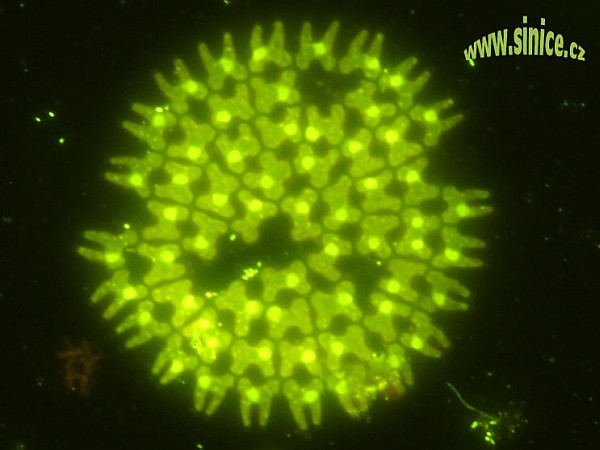
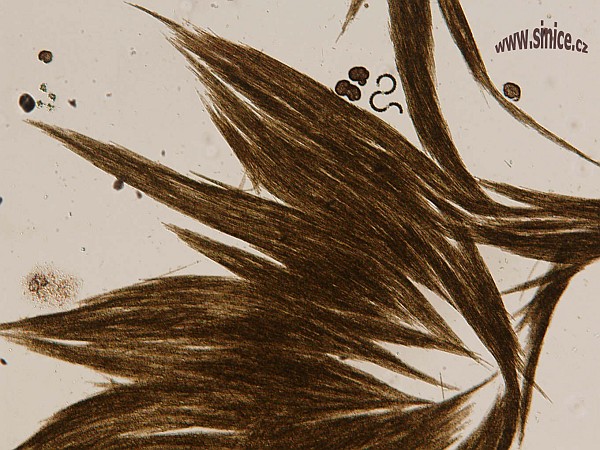
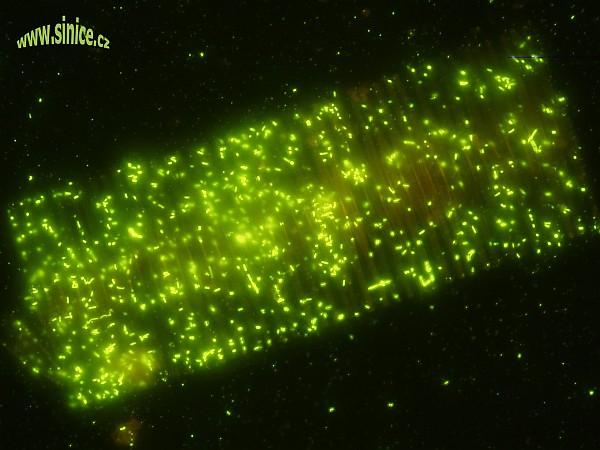
Section of cyanotoxins
Ecotoxicology of cyanobacterial toxins. (abstract 1, abstract 2, abstract 3 ![]() ). Effects of cyanobacterial metabolites on living organisms are studied. Our recent studies focus mostly on effects in fish or birds (accumulation of toxins, modulations of biochemical and physiological markers). Further, studies on algae, i.e. cyanobacterial competitors, are studied as well (biochemical markers of toxicity, growth effects etc.)
). Effects of cyanobacterial metabolites on living organisms are studied. Our recent studies focus mostly on effects in fish or birds (accumulation of toxins, modulations of biochemical and physiological markers). Further, studies on algae, i.e. cyanobacterial competitors, are studied as well (biochemical markers of toxicity, growth effects etc.)
Mechanisms of toxicity and carcinogenicity of cyanotoxins. Using in vitro toxicology tools (studies of intercellular communication, activations of nuclear receptors such as ER, AR etc.), we aim to understand principles of biochemical toxicities (mechanisms of tumor promotion).
Studies of levels and risks of microcystins and other toxins (cylindrospermopsin) (abstract 1, abstract 2 ![]() ). Using our monitoring activities in the Czech Republic (more than 80 localities), we study temporal and spatial trends in concentrations of the major cyanotoxins - microcystins. Further, we work on development and applications of highly sensitive techniques (ELISA, HPLC-MS) for detections of novel carcinogenic toxins such as cylindrospermopsin.
). Using our monitoring activities in the Czech Republic (more than 80 localities), we study temporal and spatial trends in concentrations of the major cyanotoxins - microcystins. Further, we work on development and applications of highly sensitive techniques (ELISA, HPLC-MS) for detections of novel carcinogenic toxins such as cylindrospermopsin.
Passive sampling techniques for natural toxins (abstract ![]() ). We work on development of methods for continuous monitoring of toxins (e.g. at drinking water plants). Passive sampling approach allows sensitive detection of eventual peak contaminations.
). We work on development of methods for continuous monitoring of toxins (e.g. at drinking water plants). Passive sampling approach allows sensitive detection of eventual peak contaminations.
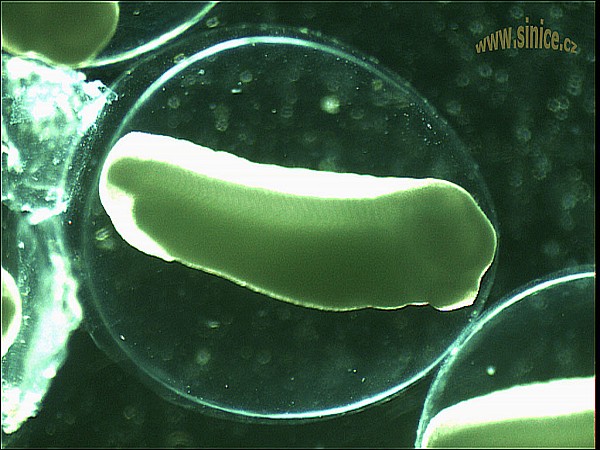
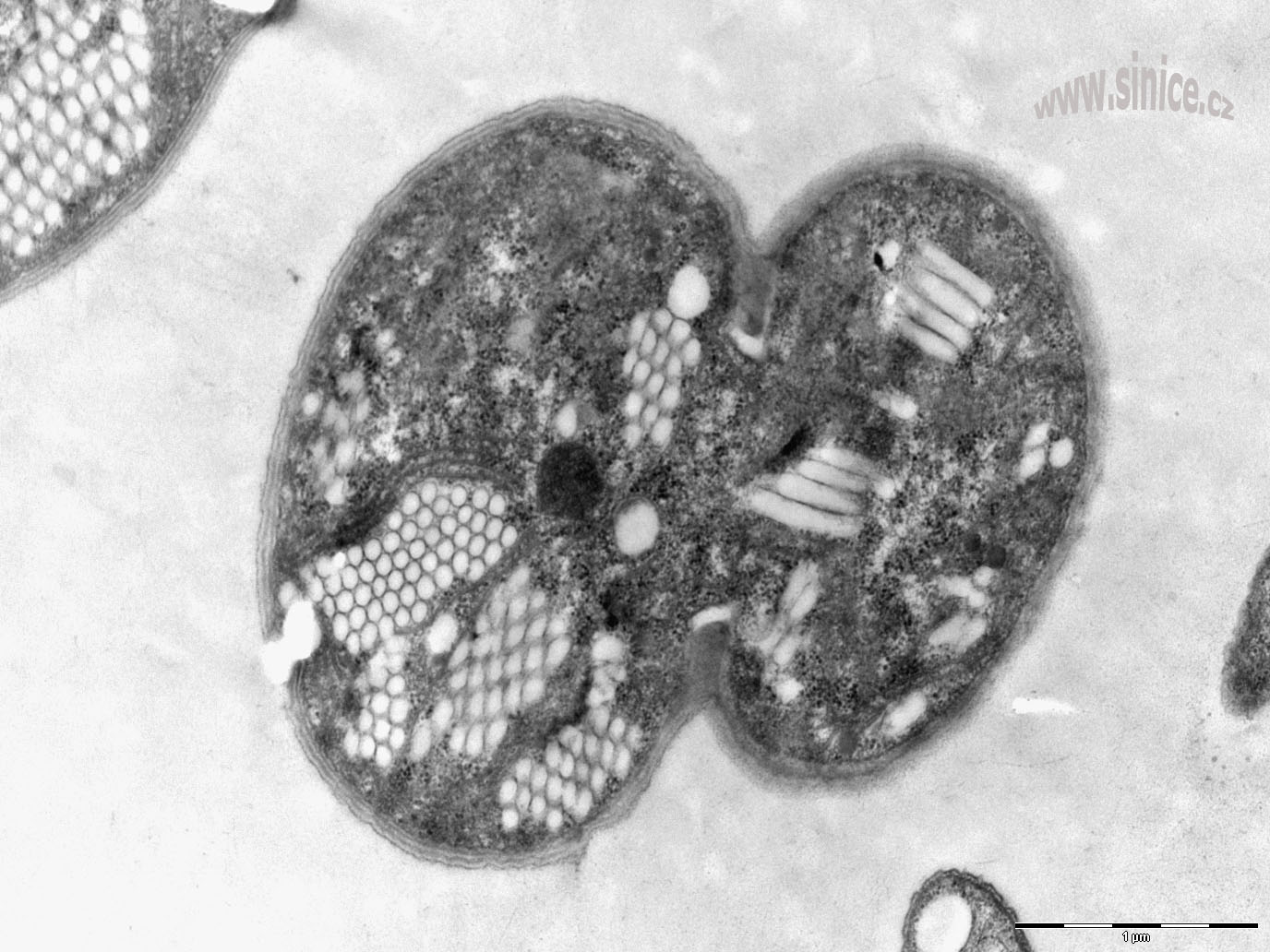
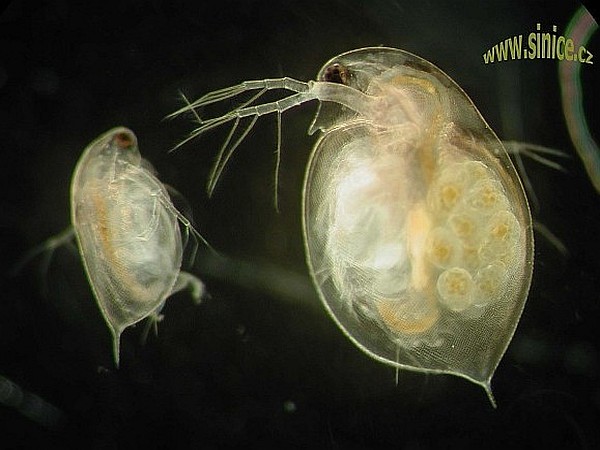
Section of cyanobacterial autecology and biology (Taxonomic section)
Assessment of factors connected with survival and re-invasion of dormant stages of water bloom cyanobacteria. Research focused to autecology nad biology of single taxons of water bloom cyanobacteria in sediments during winter dormancy and spring re-invasion. The aim is to enhance the knowledge about the cyanobacteria autecology leading to development of technologies for restriction of their water bloom events.
Prediction of cyanobacteria toxicity based on microscopical study (abstrakt ![]() ). In this research separated colonoies of different species from genus Microcystis are analysed fro their morphology and the content of cyanotoxins using mass spectrometry MALDI-TOF. The aim is to describe the variability or stability of production of some groups of cyanotoxins (anabaenopeptins, microviridins, microcystins etc.) and potential correlations of their occurrence with cell/colony morphology during the season. Cooperation with Martin Welker, Technische Universität Berlin, Institut für Chemie, AG Biochemie, Berlin, Germany.
). In this research separated colonoies of different species from genus Microcystis are analysed fro their morphology and the content of cyanotoxins using mass spectrometry MALDI-TOF. The aim is to describe the variability or stability of production of some groups of cyanotoxins (anabaenopeptins, microviridins, microcystins etc.) and potential correlations of their occurrence with cell/colony morphology during the season. Cooperation with Martin Welker, Technische Universität Berlin, Institut für Chemie, AG Biochemie, Berlin, Germany.
Monitoring of water bloom events in Czech Republic (MVKS). It is a long-term complex monitoring of quality, quantity and toxicity of cyanobakterial water blooms in selected 130 water bodies in Czech Republic during vegetation season from 1994. Many different institutions are involved in this project – except CCT and SFA also companies like local river management authorities, national health institutions etc. The aim is to build a MVKS database containing information about water blooms events and their toxicity in Czech Republic, to monitor the trends in development and comparison of the status with neighbouring countries.
Prediction of water bloom development in water bodies. Monitoring of water blooms development including horizontal distribution, physico-chemical properties and inoculum quality in sediments in selected water-source reservoirs. The aim is to develop methods for early warning system in case when cyanobacterial water bloom occurrence exceeds the hygienic limits.
Methodology for quantification of cyanobacteria in sediments. The aim is to develop, test and compare various techniques for cyanobacteria quantification in sediments. The result should be a practical method for prediction of water bloom events based on quantification data (the basic precondition of water bloom occurrence is a sufficient amount of cyanobacteria inoculum in sediments).
Biomonitoring by means of phytobenthos. The aim is to select phytobenthos taxons in Czech Republic which have good bioindication potential and are easy-to-determine. Aim of this project is to organize and create scientific basement by means of seminars and phytobenthos determination courses, implementation of Water Framework Directive (WFD) in CZ and develompent of determination equipment.
Section of popularization and ecological education
Popularization and introducing the scientific results to broad audience is an integral part of scientific research. The main aim of this activity is to interconnect all the results and findings and to present them for expert and even amateur audience.
Note:
By means of clicking on the abstract link (to public database PubMed or directly to the journal webpage) you can also get a fulltext of the article if it is accessible from your computer.